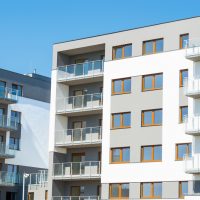
The seasonally adjusted data for July to September 2019 estimated that 39,510 new properties were started in the quarter.
Although this was up two per cent compared to the previous three months, it was an 11 per cent fall on a year earlier.
Completions were estimated at 46,000 for the three months, a two per cent increase from the previous quarter and 11 per cent higher than a year ago.
And the annual total of 177,980 was an increase of nine per cent compared with the year to September 2018.
Project Etopia founder Joseph Daniels said the data painted a very mixed picture for the industry which pointed to the chilling effect of political and economic uncertainty over the past year.
“This performance is also leaving government housing targets in the dust, as the industry has shown itself unable to put the accelerator down to deliver the homes necessary. More policy ideas are needed,” he added.
Dwellings completed
The net number of new dwellings created in England has reached its highest level since records started, government data has shown.
The net number of new dwellings in England reached 241,340 in the year to 31 March 2019, up 8.6 per cent on 2017-18. This was the highest annual figure since 2000 when records began.
New builds accounted for the lion’s share, at 213,860, up 9.5 per cent on the year before.
Conversions accounted for 5,220 properties, up 14.7 per cent. The number of conversions was below that recorded during the four peak years 2006-07 to 2009-10, when conversion levels were running at 7,600, 9,020, 8,640 and 6,230, respectively.
New dwellings created through change of use numbered 29,260, down 1.5 per cent, including 14,110 under permitted development rights, while 940 were created in other ways.
The number of new dwellings created was offset by 7,940 demolitions.
Private rental top for ‘non-decent’ stock
Meanwhile, data from the English Housing Survey revealed high proportions of “non-decent” stock.
Non-decent housing stock accounted for 17.8 per cent of all housing in 2018-19. The figure was an average comprising 24.6 per cent for private rental, 17.3 per cent for owner-occupied homes and for social housing it was 12 per cent.
Non-decent stock is defined as failing to fulfil one of the four tests for a decent home. They are that it meets the Housing Health and Safety Rating System standard for fitness, is in a reasonable state of repair, has reasonably modern facilities and services, and provides a reasonable degree of thermal comfort.
Rise of Private Registered Providers
The latest data also revealed figures for the number of dwellings by tenure in England.
Local authority-owned stock counted 1.6 million dwellings in the year to 31 March 2019, flat on the year before. This figure has fallen from earlier decades, down 12.5 per cent from 1.8 million in 2008-09 and by 50 per cent from 3.2 million in 1998-99.
At the same time, the number of dwellings owned by Private Registered Providers (PRPs) has risen to 2.6 million, up four per cent from 2.5m in 2017-18. The historical data shows a rise of 18.2 per cent from 2.2 million a decade ago in 2008-09. And growth of 136.4 per cent compared to 1.1m in 1998-99.
The total number of dwellings in England was 24.2 million as of 1 April 2018, according to the latest available data, which was published in May 2019 — this historical data provides an indication of the proportion of dwellings by tenure.
Of the total, 20 million, or 82.6 per cent, were privately owned, 2.5 million were owned by PRPs, 1.6 million were local authority-owned dwellings and other public sector homes counted 43,000.















